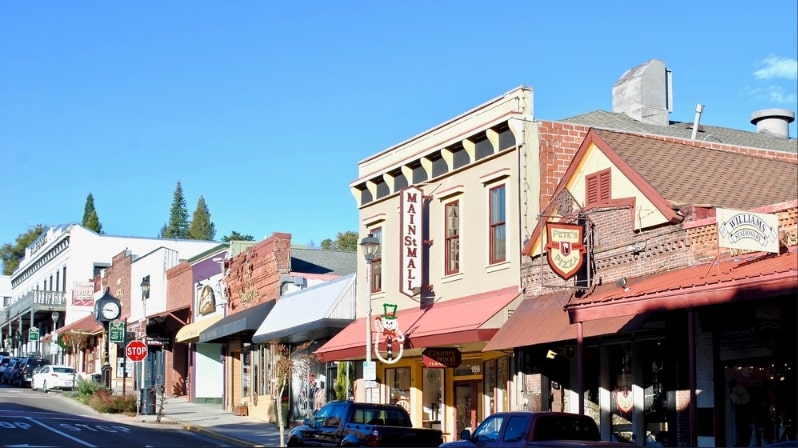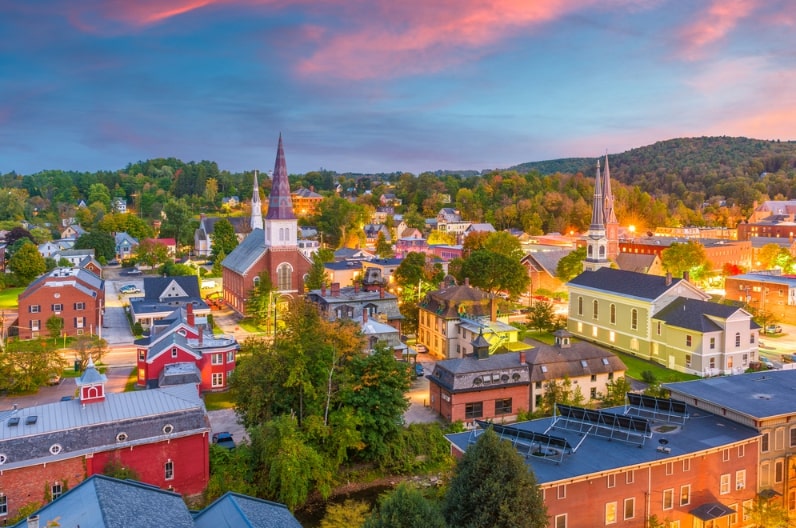Introduction: In this article, Gena Philibert-Ortega gives tips for planning a genealogy research trip to your ancestor’s hometown. Gena is a genealogist and author of the book “From the Family Kitchen.”
You’ve done the research. Now you want to go to the hometown of your ancestor. That’s a great trip to plan – but don’t pack your bags just yet. Make sure that you plan the genealogical aspects of your trip along with the travel. Most trips to an ancestor’s hometown will include some on-site research, ancestral sight-seeing, and maybe even some visiting with new-to-you cousins. So, how do you prepare?

Photo credit: https://depositphotos.com/home.html
Gather All Your Current Research
Take a look at what you currently know about your ancestor. What information have you found online in records, databases, and historical newspapers? What do you not know? Research Logs and Research Plans will help you focus on what you want to learn on your trip so that you don’t waste any of your limited time.
Where Are the Records?
If you have research questions, you need to know what records answer those questions and where they are located. In some cases, the records you need may only be available in the area around where your ancestor lived. Some places to visit on your trip might include:
- Public Library
- Academic Library
- Local Archive
- Cemetery
- Local Government Office (vital records, land records, etc.)
- Courthouse
- Museum (for local history and historical context)
- Historical Society
Make a list and check the websites or the online catalogs for the above. Make sure to not only concentrate on the records they may have for your individual ancestors but also the records they have for that place and time. You may find that your ancestor was a member of a group that you were previously unaware of.
Let me give you one other tip about your trip. How will you copy all of those documents, book pages, and records you find? You need to plan for that as well. When possible, take photos or scan records with a mobile device app. This would allow you to store these items on your mobile device (phone or tablet), thus avoiding the cost of paper copies and the excess weight in your luggage.
Remember to expect the unexpected on your trip. I recommend that you upload those images to a cloud-based storage ASAP so that if your device is lost or stolen, you don’t lose those images.
Pack for your trip a flash drive, cash (in case you need to pay for paper copies or parking), and paper and pencil. Do not ever take your original documents or photographs with you on a research trip. If you must bring them, bring a copy.

Photo credit: https://depositphotos.com/home.html
What Sights to See
While you are on your trip you’ll want to explore where your ancestor frequented. This may include their:
- House
- Church
- School
- Workplace
You may have an idea of some of these addresses because of censuses, directories, and land records. You might also have a timeline of dates and places from your historical newspaper searches. Spend some time prior to your trip previewing these places to see if they even exist anymore. Utilize a map website like Google Maps or Google Earth that combines maps with images so that you can see exactly what that place looks like today. You may learn that the ancestral home no longer exists.
Other mapping websites that combine maps with images include HistoryPin and What Was There.
Let Them Know You’re Coming
Hoping to meet up with unknown-to-you cousins? Planning your trip includes making some contacts beforehand. Email the library or archive you plan to visit to ensure that the materials you want are onsite and available for your visit. Ask your family about extended family members they may know in that place that you could contact. Write to the local historical or genealogical society. Maybe they have a member who has lived in the area for their whole life and knows “everybody.” That knowledge could help you make some important introductions.
Is the area you are going to a tourist area? Consider investing in some tours. Local-to-the-area tour guides can be a worthwhile investment. Contact them ahead of time, explain the purpose of your visit and what you want to see and know more about.
Plan for the Unexpected
I don’t know about you, but no matter how great I plan for a trip, bad stuff happens. I’ve had trips where I became extremely ill, had near car collisions, and hotels lost reservations. So, my biggest tip for you is to expect the unexpected, be flexible, and don’t schedule something for every day of your trip. Don’t overschedule yourself. You may find more than you can research in a lifetime at that archive and will be thankful for an extra day to go through some of it. And if you become ill, that extra day can feel like a lifesaver.
Life happens when we have other plans. I know it might seem like a “once in a lifetime trip,” but you don’t want the memory of that trip to be that it was hurried and miserable. One of the things I do with my Research Plan is: I prioritize my research. What are the absolute “must-haves” for that trip? What can be ordered through interlibrary loan? Could any of the research be done by a researcher who lives in the area? It’s easy to pay a professional to do some research if need be and harder to delegate some archival research or a visit to your great-grandparents’ home. Prioritize your time so that if you don’t get it all done, you have a Plan B.
Let’s Go!
I love travel and there’s nothing better than standing in the place of your ancestors to learn more about their lives. But like any travel, family history travel takes some planning. Even if you can’t travel for a year, start planning today so that when the time comes, you’re ready!
Explore over 330 years of newspapers and historical records in GenealogyBank. Discover your family story! Start a 7-Day Free Trial
Note on the header image: historic homes along Front Street in New Haven, Connecticut. Credit: Iracaz; Wikimedia Commons.
Related Article:
